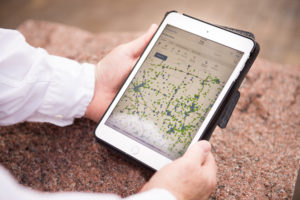A new tracking code entitled, Material Management (MM), has been created within the Bureau of Remediation and Redevelopment Tracking System (BRRTS) to identify sites and facilities that have accepted contaminated soil or other solid waste with an exemption from certain solid waste program requirements through Wis. Admin. Code §§ NR 718.12 or NR 718.15.
BRRTS numbers assigned to the MM activities codes will have a ‘15’- prefix. Only the main actions (e.g., an interim or remedial actions) and continuing obligations (e.g., engineering control for direct contact threats) directly related to the material management activity will be tracked as an MM activity on the receiving site or facility. All interim or remedial actions involving Wis. Admin. Code ch. NR 718 materials management will be concurrently tracked at the ERP or LUST source property where the contaminated material was excavated. The exception would be for continuing obligations imposed on the site or facility receiving the material.
The MM tracking code was created to allow the public to use BRRTS on the Web (BOTW) to clearly identify sites or facilities where contaminated soil and other solid waste was received and how it is being managed. For actions approved by DNR in April 2018 and forward, BOTW can be used to search for sites and facilities where a Wis. Admin. Code §§ NR 718.12/718.15 exemption was granted. Only actions directly related to Wis. Admin. Code §§ NR 718.12 and 718.15 materials management will be listed in each MM activity, allowing users to efficiently obtain information specifically related to these activities.
An MM activity will be opened for sites and facilities where a Wis. Admin. Code §§ NR 718.12 or NR 718.15 exemption was granted after March 29, 2018. At this time, the DNR does not intend to retroactively create MM activities at sites or facilities where Wis. Admin. Code §§ NR 718.12 or NR 718.15 exemptions were previously granted due to workload challenges.
Any questions regarding this process may be addressed to Paul Grittner at (608) 266-0941 or paul.grittner@wisconsin.gov.

